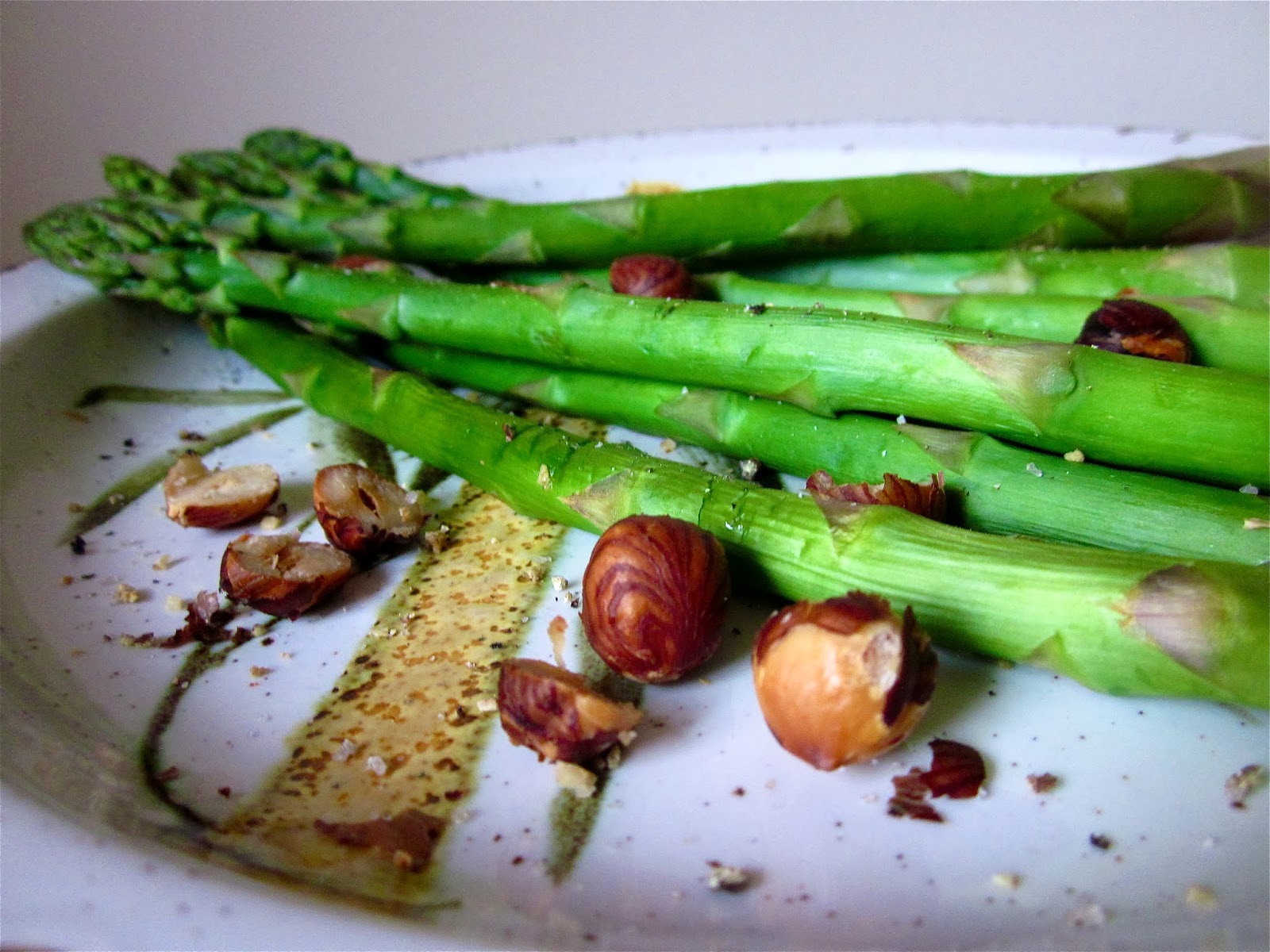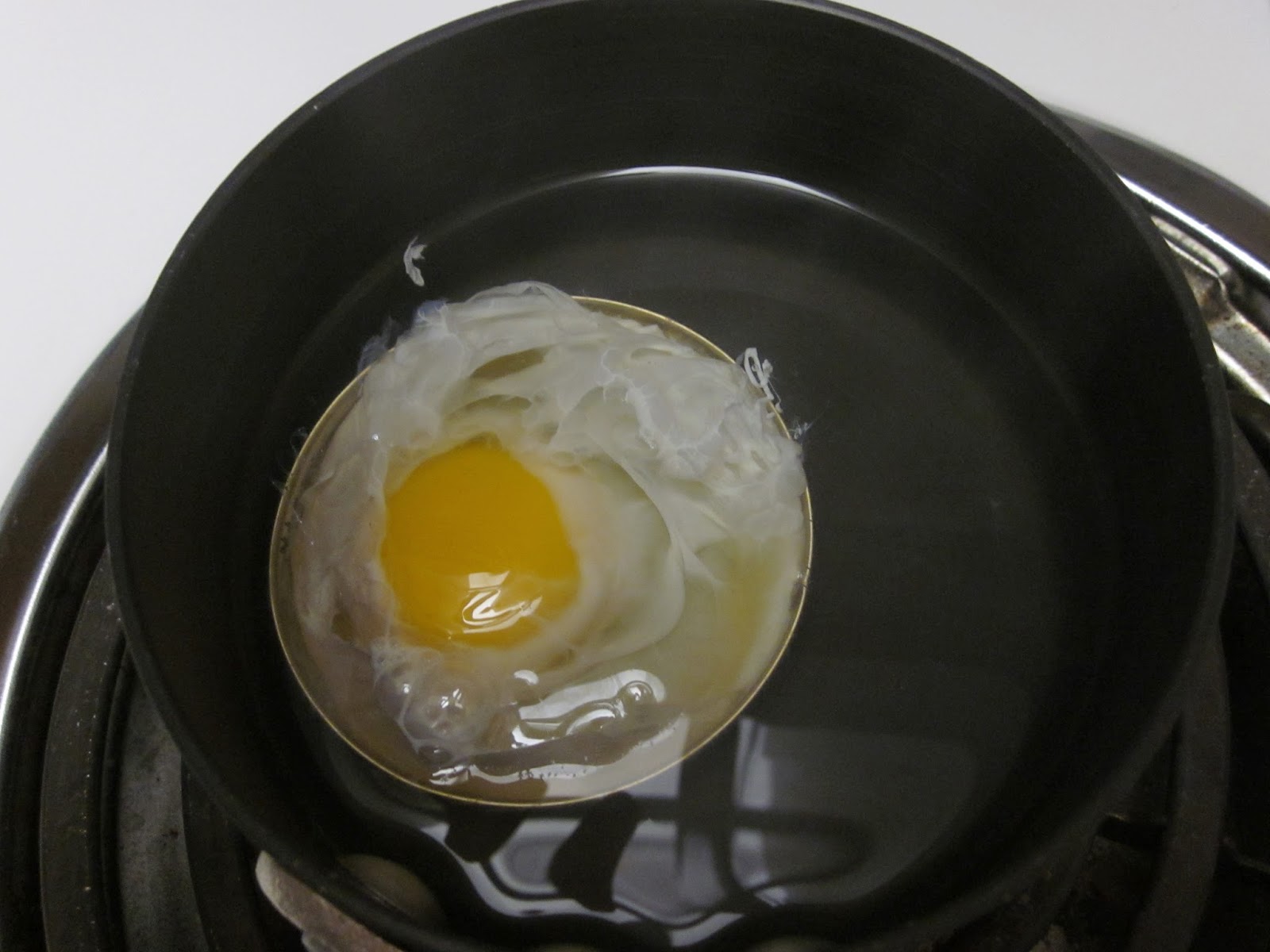Now is the time to eat asparagus! Asparagus season is late winter to spring. From January to early April, asparagus is coming from the San Joaquin River Delta and from March to mid-June it's coming from the Central Coast.
Asparagus is easy to overcook, but I have found that broiling is the key to consistently terrific results. Plus, broiling is synonymous with quick and easy, the two magic words that any cook loves to hear!
Keeping things simple is the best way to go with asparagus. With a few grinds of lemon pepper, some warm, toasted hazelnuts, and perhaps a sprinkle of grated parmesan, you'll have a savory, simple side-dish worth repeating.
I really like this lemon pepper from TJs. It has sea salt, lemon zest, garlic, and black peppercorns. Half the fun is getting to use a grinder!
Nutrition Highlight: Asparagus
Asparagus is a good source of vitamin K which is important for blood & bones.
Blood
We recently studied vitamin K in my Metabolism of Vitamin and Minerals class. In the 1930s, Dam, a Danish nutritional biochemist, was trying to prove that cholesterol was an essential part of the diet and he fed chickens a low-fat, low-cholesterol diet. Unbeknownst to Dam, this also meant his chickens weren't getting enough vitamin K (since it's fat-soluble), so they all suffered from internal bleeding. But when he added a lipid extract from green plants, the chickens improved. Ten years later, vitamin K was isolated in that lipid extract. FYI: K stands for koagulering, Danish for coagulation.
Bones
I think it's so cool knowing how vitamin K works in bone mineralization! After an osteocalcin protein gets translated, a vitamin K dependent enzyme adds a carboxylic group, creating a Gla residue (gotta love the names scientists create). The Gla residue has 2 negative charges which allows calcium to bind, because calcium has a + 2 charge.
Several studies have proven that increased vitamin K intake leads to increased bone density. Greater bone density means you are less likely to suffer from osteoporosis in your later years. Age is the #1 risk factor for osteoporosis, so it's best to increase your bone density now before it's too late! In addition to consuming the "bone V&Ms" (vit. D, K, A, & calcium), people should also do weight-bearing exercises. I recommend trying a Body Pump class at your local gym. I was initially intimidated by the whole idea of weights, but now I go every week because it's so fun and I have definitely seen improvement in my muscle tone and bone density.
I've been able to track my muscle mass & bone density status over my college career thanks to Cal Poly's DXA machine. It pays to be a part of research! The DXA measures bone density, lean muscle mass, and body fat. It's recommended that you get a DXA done in your late teens or early 20s so that you can see if you might be at risk for osteoporosis, since you can increase your bone density up until your late 20s. After you hit 30, it's all about bone maintenance.
Sources
Dietary vitamins are more bioavailable than supplements, so pile your plate high with dark, leafy greens (esp. kale, spinach, broccoli, & swiss chard). Canola and olive oil are also sources of vitamin K.
Try broiled asparagus, grapefruit segments, and a poached egg on toast. I nested my poached egg on some kale salad because I've found that the creaminess of egg complements the bitterness of kale.
Unlike a salad made of spring greens, massaged kale salad keeps for several days. I like to make a large amount all at once since massaging is a little messy, and then I can customize it day-by-day.
Cooking Tip
Use a mason jar lid to corral your egg.
Poaching is my favorite way of preparing an egg. It produces consistent results and you don't have to worry about messy oil splatters. The mason jar lid (small, jam size) keeps the egg whites from spreading.
1. Bring about 2" of water to a boil, then turn heat to low—you just want the occasional, small bubble.
2. Place lid in water and crack egg into it.
3. Cook for 5 min. The white should be firm and opaque.
4. Slide a fork underneath, remove egg from pan, place egg on top of toast, and loosen the edges with a fork. Voilà!
1. Bring about 2" of water to a boil, then turn heat to low—you just want the occasional, small bubble.
2. Place lid in water and crack egg into it.
3. Cook for 5 min. The white should be firm and opaque.
4. Slide a fork underneath, remove egg from pan, place egg on top of toast, and loosen the edges with a fork. Voilà!
asparagus (5-7 stalks/person)
hazelnuts
lemon pepper
grated parmesan cheese
Preheat broiler to high, which takes less than 5 minutes.
Meanwhile, wash the asparagus (no need to dry) and put them on a cookie sheet. Place hazelnuts in a mini-cast iron or oven-safe pan, and place the pan and cookie sheet under the broiler.
Broil both for 5 minutes. The asparagus should be bright green and crunchy and the hazelnuts should smell toasty. Leave the hazelnuts in the oven while you plate the asparagus.
Plate asparagus, add a few grinds of lemon pepper, then toss on some broiled hazelnuts. Could also add some grated parm for umami!
The broiled asparagus is good for a first course because it's best piping hot. If you are going to try it with a poached egg on toast, I would recommend starting the poached egg first, turn on the broiler, and when you have 2 minutes left, start the asparagus. By the time your toast is done and you get the egg plated, the asparagus timer will be ringing.





This sounds great! I have been using lemon pepper on my asparagus for awhile now and I think the hazelnuts sound like a delicious garnish.
ReplyDeleteWill have to try this!
ReplyDelete